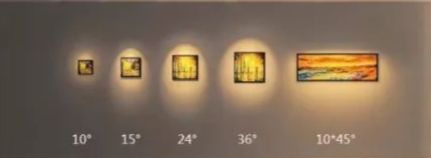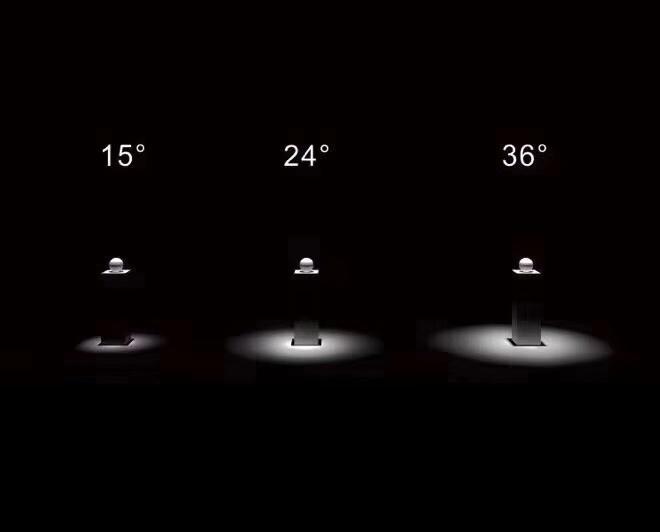Choose lighting without main luminaire, which can not only produce lighting effects but also show individual needs. The essence of non-main liuminaire is scattered lighting, and spotlights are the most used.
1. The difference between spotlights and downlights
What are downlights and spotlights? It can be seen from the definition that the biggest difference between downlights and spotlights is the scattering of light.
2. What is beam angle
The definition of CIE International Lighting Committee and China National Standard GB: On the plane where the beam axis is located, the center point passing through the front of the lamp is the axis, and the angle between the area of 50% of the peak central light intensity.
3. Lighting effects with different beam angles
Since the spotlights are angled, what is the effect of different angles of light? The common beam angles are 15 degrees, 24 degrees, and 36 degrees, and the rare ones in the market are 6 degrees, 8 degrees, 10 degrees, 12 degrees, 45 degrees, 60 degrees.

4. How to choose the beam angle of the spotlight
When we were doing lighting design, we encountered a lot of spotlights installed on very narrow four-sided roofs, and the distance between the lights and the wall was within 10cm. If the lights attached to the wall were not selected properly, they would easily be partially exposed, and the light would not look good. Generally, if the conditions are limited and the lamp is very close to the wall, in this case, the rescue method is to choose a wide beam angle (>40°), and then the lamp opening should be as small as possible.
The principle of matching the lighting angles of the overall space is that if you want a space with a good lighting atmosphere, you can’t rely on only one beam angle. We can configure residential lighting according to 5:3:1, 5 36 degrees + 3 24 degrees + 1 15 degrees, so the light effect will not be bad.
Post time: Dec-19-2022






